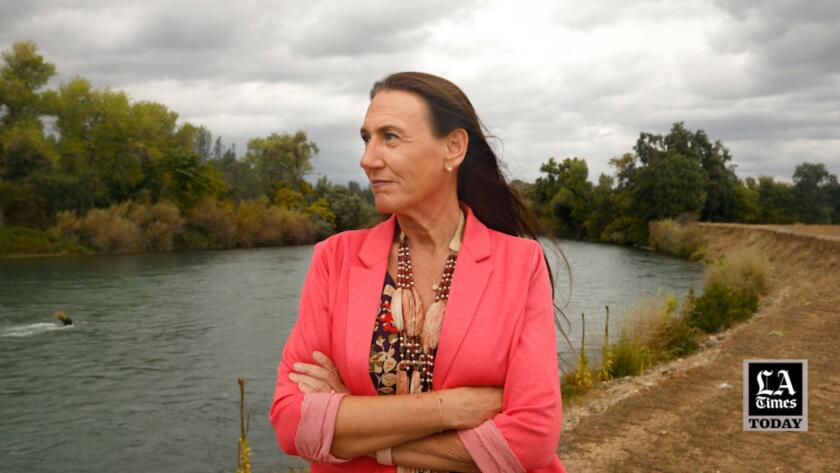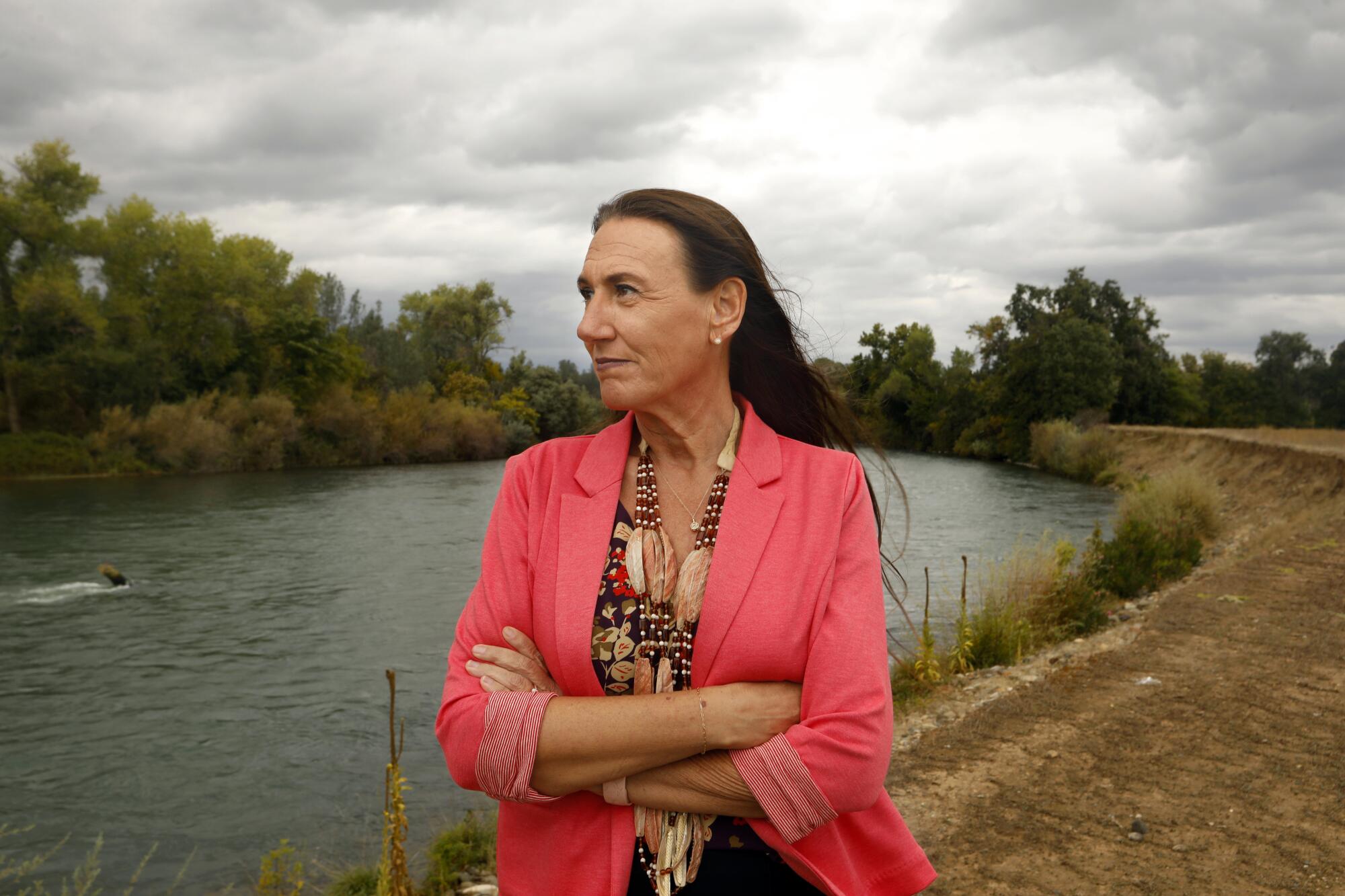
- Share via
REDDING — To the native Wintu people it was Bohem Puyuik, the “Big Rise,” and no wonder. Mt. Shasta towered above everything else, her loins delivering the natural springs and snowmelt that birthed a great river.
The Sacramento River provided such an abundance of food that the Wintu and many neighboring tribes — the Pit River, Yana, Nomlaki and others — had little to fight over. They thrived in pre-colonial times, on waters that ran silver with salmon, forests thick with game and oaks heavy with acorns.
But centuries of disease, virtual enslavement and murder wrought by European and American invaders scrambled the harmony that once reigned along the Upper Sacramento River.
Today, three tribes here are locked in a bloodless war. At issue is a proposal by one Indigenous group to expand and relocate its casino and whether the flashy new gambling hall, hotel and entertainment center would honor — or desecrate — the past.
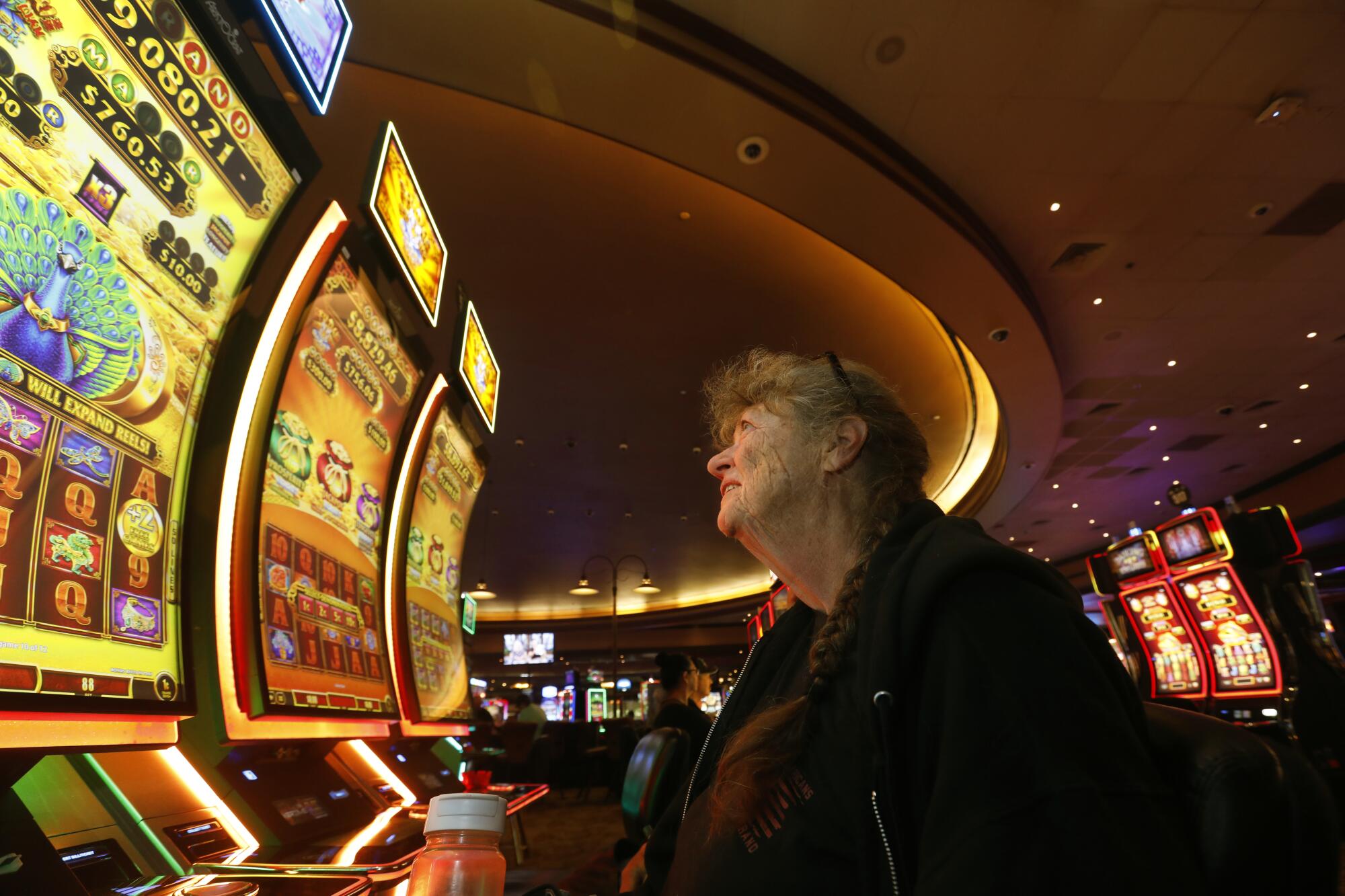
The casino envisioned by the Redding Rancheria and its 422 members would rise nine stories on 232 acres along Interstate 5. The rancheria — home to descendants from three historic tribes — began planning the development nearly two decades ago, envisioning a regional magnet for tourists and gamblers.
But the proposal has been buffeted by influential opponents, including the city of Redding, neighborhood groups and the billionaire next door — who happens to be the largest private landowner in America. The naysayers list a cavalcade of complaints against the new Win-River casino complex, saying it would despoil prime farmland, exacerbate traffic, increase police and fire protection costs and threaten native fish in the Sacramento River.
Those complaints have helped stall, but not kill, the project, whose fate rests almost solely in the hands of the Bureau of Indian Affairs in Washington, D.C. And now the BIA’s obscure bureaucrats have been confronted with an explosive new charge from two neighboring tribes: that construction of the casino would desecrate what the tribes say should be hallowed ground — the site of an 1846 rampage by the U.S. Cavalry that historians say probably killed hundreds of Native people.
The Sacramento River massacre has not received the attention of other atrocities of America’s westward expansion, such as the one in 1890 at Wounded Knee, S.D., where U.S. troops killed as many as 300 Lakota people. Estimates of the carnage, recorded over the decades from witness accounts and oral tradition, range from 150 to 1,000 men, women and children slaughtered along the banks of the Sacramento River.
If the higher estimates of the death toll are correct, it would rank as one of the largest single mass killings of Indigenous people in American history.

“In my heart, I find it hard to believe that there are Wintu people that are willing to build a casino on ... the blood-soaked dirt of the massacre site,” Gary Rickard, chair of the Wintu Tribe of Northern California, told a state Assembly committee in August. “There are dozens of other places along the I-5 corridor and the Sacramento River.”
Redding Rancheria Chair Jack Potter Jr., himself part Wintu, called the claim that his tribe would build its casino on the massacre grounds “a slander that will not be easily forgotten.” He told state lawmakers that the real massacre site is miles away. Rancheria leaders said their opponents have manufactured the controversy for a less honorable reason: to block what would be a sparkling new competitor.
“Gaming in Indian country can be a tide that raises all of our canoes,” insisted Potter, who appeared at times to fight back tears as he spoke at the Sacramento hearing. “We should not battle against one another, in that spirit.”
Friendships that go back decades and tribal ties of a century or more have been imperiled by the casino furor. Native people normally aligned against a hostile or indifferent U.S. government — “We’re all the children of genocide,” as one elder put it — have watched sadly as their conflicts turn inward.
It’s a dynamic that has played out before. Robbed of their ancestral lands, tribes now sometimes fight when one tries to claim new territory, often as a base for a lucrative modern endeavor: gambling.
The friction is exacerbated by the peculiar history of the Redding Rancheria — and by opponents’ eleventh-hour invocation of the Sacramento River massacre, 19 years after the rancheria began to assemble parcels for the project.

The Redding Rancheria refers to a nearly 31-acre stretch of land near the south end of Redding that the federal government bought in 1922 for “homeless Indians” who came to the area as seasonal workers for ranches and orchards. The rancheria sits in a relatively obscure location compared with the interstate-adjacent site of the proposed casino, more than three miles by car to the northeast.
In 1939, the Wintu, Pit River, Yana and other Indigenous peoples formed a rancheria government. It was recognized by the United States. But in 1958, an act of Congress “terminated” recognition of multiple California groups, including the Redding Rancheria, in an attempt to force Indians to disperse into the general population. It took a landmark 1983 court settlement to formally restore recognition of 17 rancherias, including the one in Redding.
The result is that there are Redding Rancheria members with Wintu blood, like Potter, 52, who firmly support the casino, while other Wintu descendants who are not descended from the original rancheria families, like Rickard, 78, adamantly oppose it. Rickard grew up with Jack Potter Sr. and has known his son since he was a boy.
Cordiality prevails, at least outwardly, when Rickard and Potter meet today. But the bad blood between their groups has become fierce, exacerbated by the yawning wealth disparity between the rancheria and the Northern Wintu.
Rancheria members have thrived largely because of the success of their existing Win-River Resort & Casino, which operates 550 slot machines, a dozen table games, an 84-room hotel and an RV park.

The complex is the biggest income producer for the rancheria, which also owns a Hilton Garden Inn and a marijuana dispensary in Shasta County. Sources familiar with the tribe said each enrolled member receives a monthly “per capita” payment of at least $4,000 and perhaps as high as $6,000.
The rancheria’s chief executive, Pitt River descendant Tracy Edwards, 54, declined to discuss the amount of the payments.
That income, along with health clinics and other benefits, makes the Redding Rancheria members the envy of Indigenous groups with comparatively paltry assets. Rickard’s Northern Wintu claims roughly 560 certified members, but like many groups across America, the tribe has been laboring for years and still has not received formal recognition from the U.S. government. That means the tribe can’t put land into trust, a prerequisite to casino development and also a shield against federal, state and local taxes.
“We don’t have the resources in order to obtain the things we need,” said Shawna Garcia, the Northern Wintu’s cultural resources administrator. “We don’t have the revenue to assist our members with things like college, housing and other assistance.”
Historians and ethnographers say the Wintu were the predominant tribe around the site proposed for the casino complex, an expanse of meadow and scrubland that locals dub the Strawberry Fields because of its agricultural history. And Rickard questioned why the “pure-blood Wintu people” he represents have been left to struggle, while the rancheria — representing an amalgamation of tribal groups — stands poised to create an even bigger cash cow with its new casino.
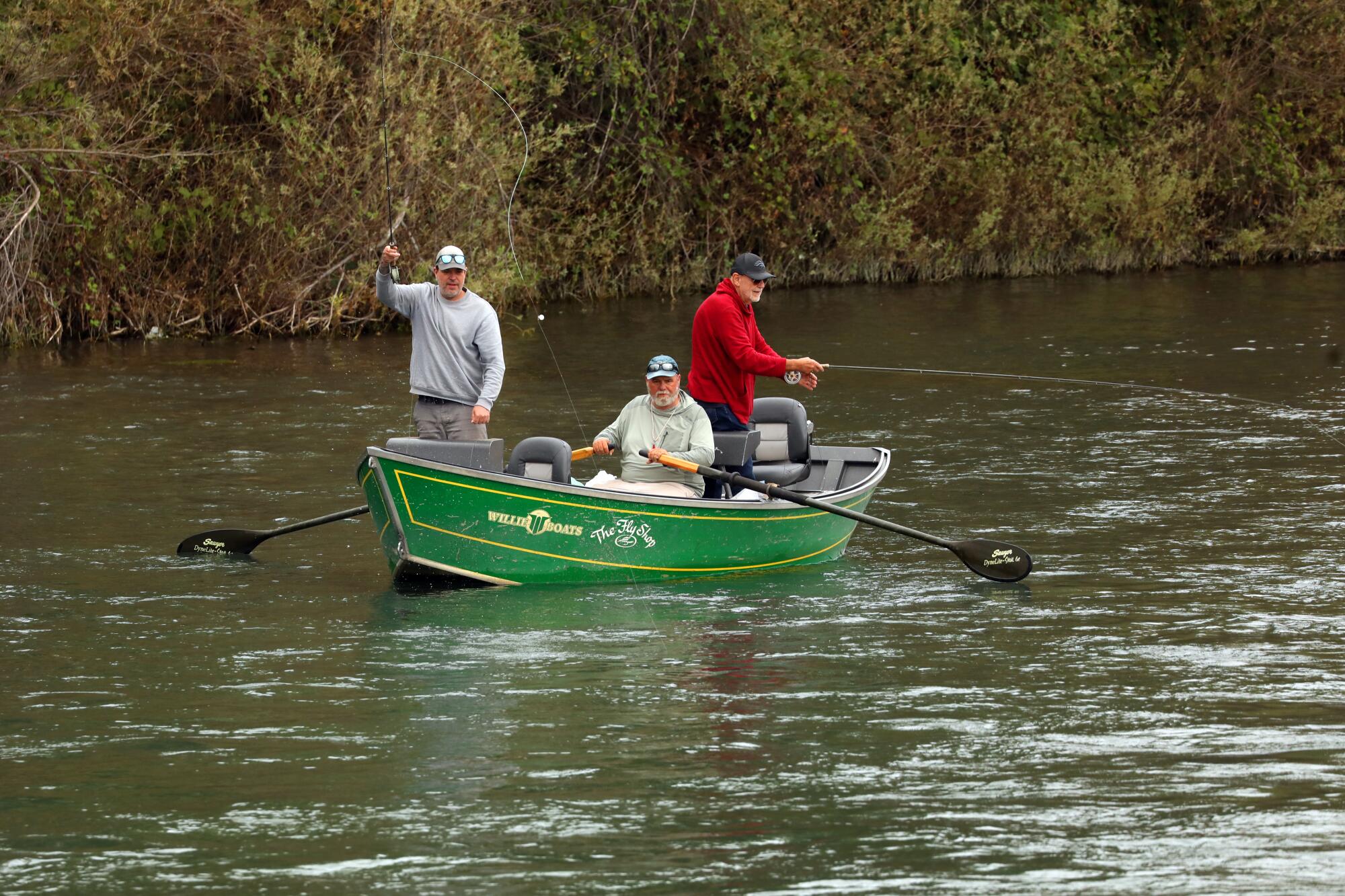

Rancheria leaders like Edwards, a UC Davis-trained lawyer, have emphasized how the tribal group has supported Native and non-Native people, both as one of the largest employers in Shasta County and through its charitable foundation.
In just one year, 2018, the rancheria said it gave more than $1.2 million to community organizations, helping serve the homeless and victims of the Carr fire. During the early phase of the COVID-19 pandemic, the rancheria donated $5,000 each to 60 businesses struggling to stay afloat.
At a cost of $150 million, the rancheria’s new casino would feature 1,200 slot machines — more than double the number at its current casino — and with 250 rooms, the new casino hotel would be more than triple the size of the existing hotel. The tribal group has pledged to close its current Win-River casino when the new one opens.
The Tachi Yokut Tribe is celebrating the return of California’s Tulare Lake, saying water should remain to heal an ecosystem that was drained for agriculture.
The rancheria’s outsized community presence has created substantial goodwill around Redding, but a portion of residents have stepped forward — via petitions and ballot measures — to express disdain for large developments they feel could harm the rural character of their community.
Among the more powerful opponents is Archie Aldis “Red” Emmerson, president of logging giant Sierra Pacific Industries, whose sprawling estate looms along the Sacramento River, just south of the casino site.
In 2020, an Emmerson-allied company purchased property from the city of Redding that included a portion of a road that would be the north entry to the casino site and created an easement that would have barred access to the rancheria land for all but agricultural purposes. The easement effectively would have thwarted the casino by blocking vehicle access to the development.
But in 2022, a Shasta County Superior Court judge voided the deal, saying that in selling the land (for just $3,000 to the billionaire) the city had violated its “own processes, procedures and the relevant law.” The ruling nullified the easement, preserving the rancheria’s unrestricted access to the property.
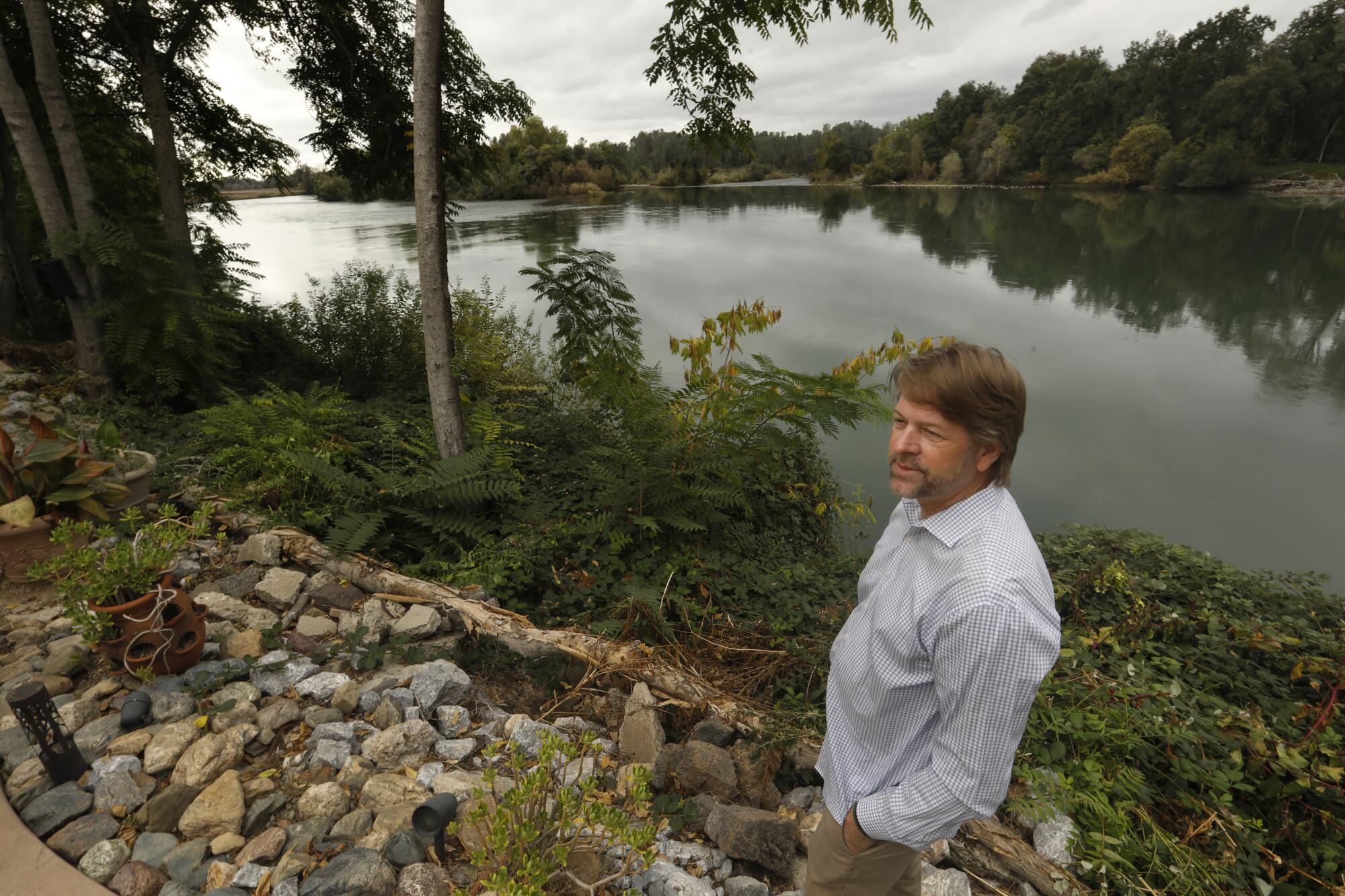
The Redding City Council and neighboring homeowners have maintained their opposition to the project for years, while a new conservative majority on the Shasta County Board of Supervisors recently reversed the county’s earlier objections. The supervisors supported the casino, despite admonitions from the sheriff, fire chief and county counsel that the agreement with the rancheria did not provide sufficient compensation to cover the increased costs of serving the big development.
The rancheria agreed to make one-time payments totaling $3.6 million to support Shasta County, the Sheriff’s Department and fire and emergency services. That initial infusion would be supplemented by recurring payments: $1,000 for each police service call and $10,000 for each fire/emergency service call.
No issue has unsettled intra-tribal relations, though, like the debate flowing out of the terrible events along the Sacramento River 177 years ago.
Oral histories of the Wintu and neighboring tribes recall how Native families and elders had gathered along the river known as the Big Water each year in early April for the spring salmon run. Traditionally, the season signaled rebirth.
But Capt. John C. Fremont had other ideas.
Fremont diverted his men from their ordered assignment: completing land surveys in the Rocky Mountains. The Americans instead went adventuring to California, where, in the spring of 1846, they responded to sketchy claims from settlers that they were endangered.
About 70 buckskin-clad white men set upon the Native people, the locals far outgunned by the invaders, each toting a Hawken rifle, two pistols and a butcher knife, according to UCLA historian Benjamin Madley‘s detailed account of the massacre.
The horsemen completed their grisly work with such evident pride that legendary frontiersman Kit Carson later bragged that the coordinated assault had been “a perfect butchery.”
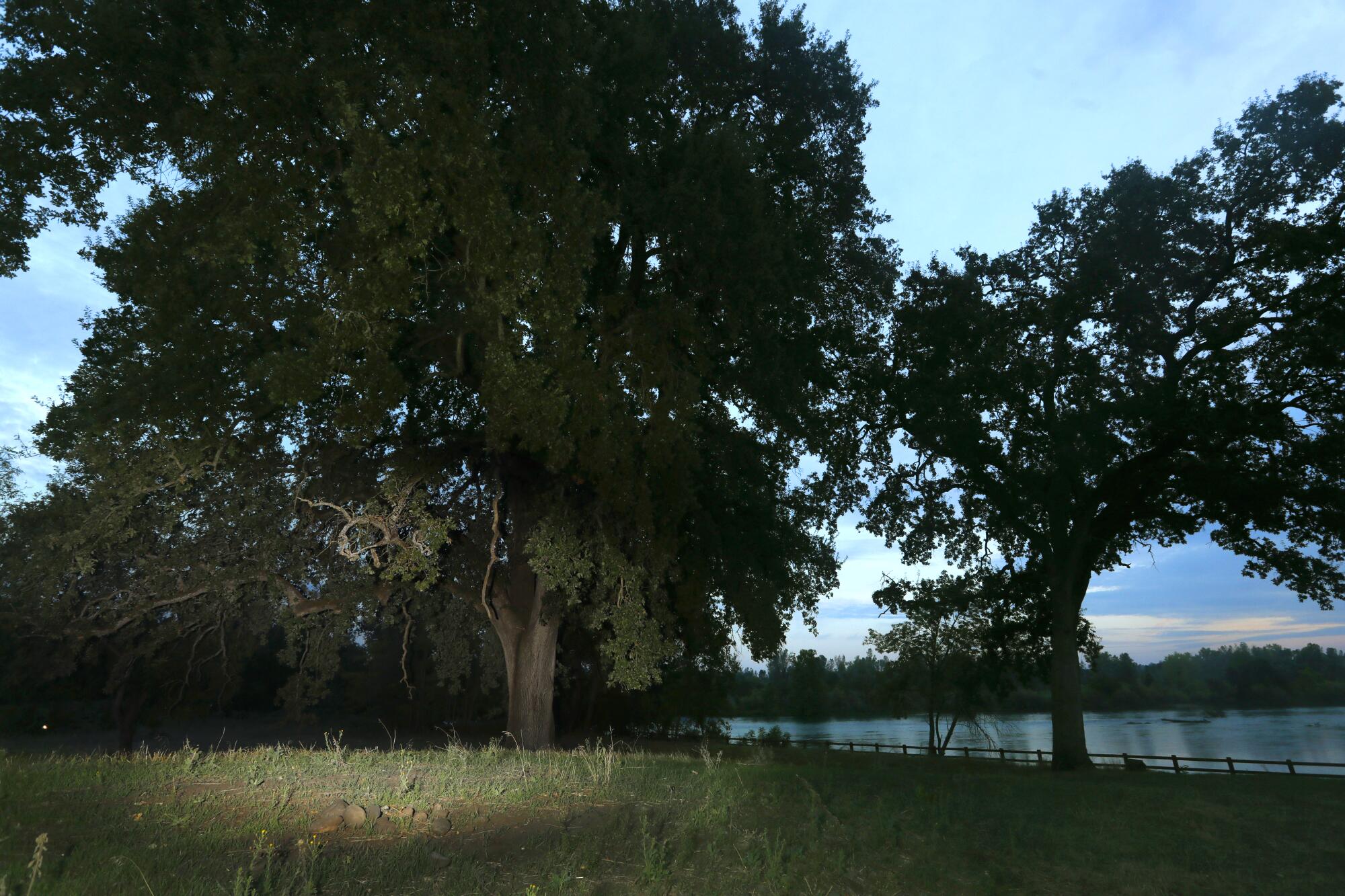
The massacre marked the beginning of “a transitional period between the Hispanic tradition of assimilating and exploiting Indigenous peoples and the Anglo-American pattern of killing or removing them,” according to Madley’s “An American Genocide: The United States and the California Indian Catastrophe.”
Fremont (later a U.S. senator from California and a Republican presidential candidate) would say that his party attacked the natives because of reports of an “imminent attack” upon settlers. But the “battle” was one-sided, with the federal troops suffering no known casualties. Afterward, according to Madley’s account, Fremont’s men feasted on the Native people’s larder of fresh salmon.
In the nearly two centuries since, the tragedy would be more forgotten than remembered. There is no historical marker around Redding noting the event.
The Wintu people believed to have been the principal victims have preserved memories of the mass killing in their oral history. But no ceremony marks the atrocity. And at the Wintu cultural resource center in Shasta Lake City, a wall-size timeline of the group’s history makes no mention of the 1846 bloodshed.
There’s also the now-pressing question — pushed to the fore by the casino feud — about precisely where the massacre occurred. The Northern Wintu and another outspoken opponent, the Paskenta Band of Nomlaki Indians, insist that the Strawberry Fields property was a key location in the atrocity.
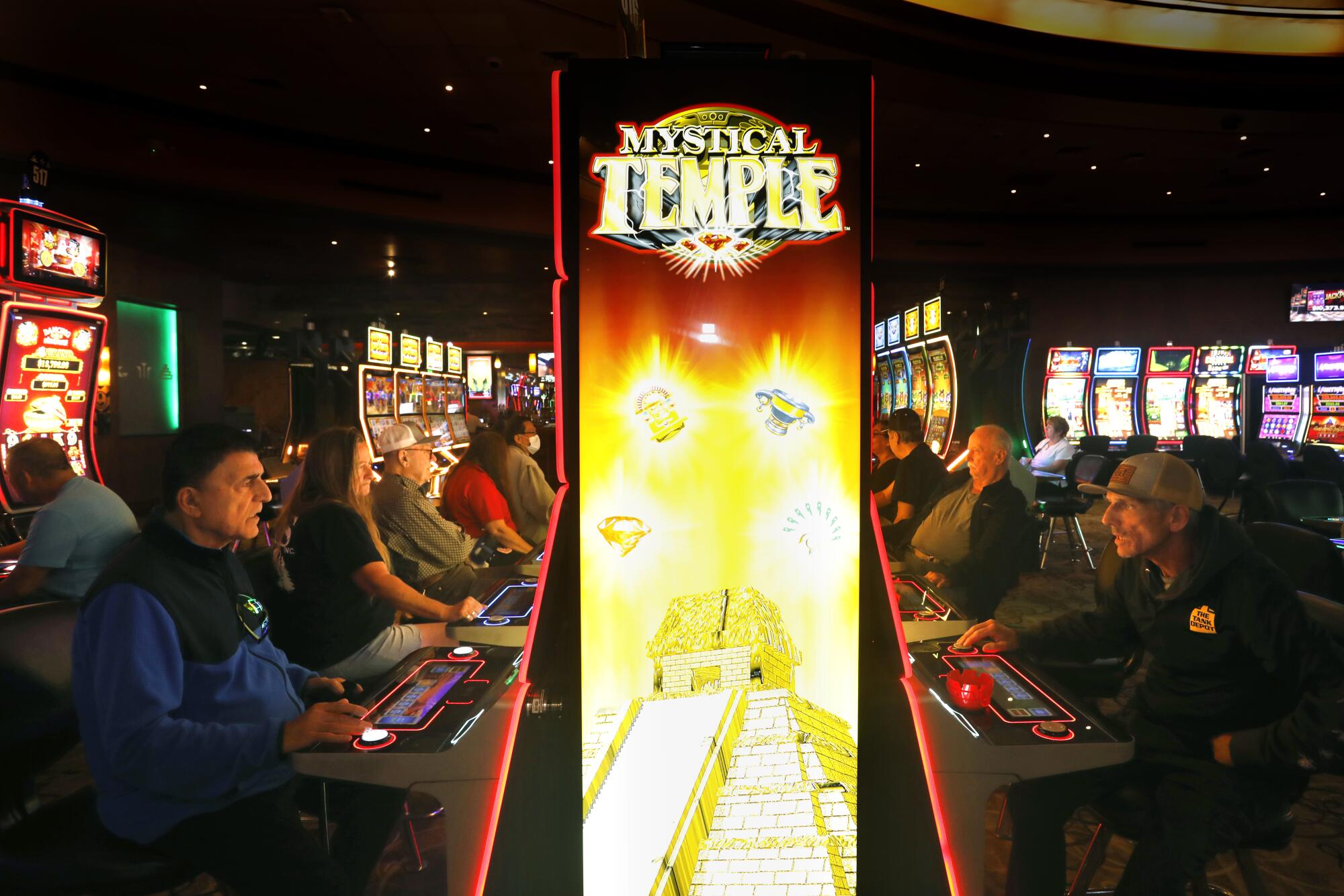
The Paskenta commissioned a study by a retired anthropologist from Cal State Sacramento that drew on research from the late 1800s by a linguist from the Smithsonian Institution who, in turn, got much of his information from a Wintu elder who survived the massacre. The report, by Dorothea Theodoratus and a colleague, said that the “center” of the massacre was “opposite the mouth of Clear Creek” in the Sacramento River, a point roughly two miles south of the proposed casino location.
But other accounts from participants and witnesses said Fremont’s soldiers chased down victims after the initial assault, leaving the exact range of the bloodshed unknown. The Theodoratus report says that six villages, including two on the proposed casino property, were so thoroughly intermingled that all “would have had some direct involvement with that massacre.”
Andrew Alejandre, chair of the Paskenta Band, told the Assembly Governmental Organization Committee in August that his tribe is seeking to have the state and federal governments designate the Strawberry Fields a sacred site, off-limits to development. Alejandre, 35, said his tribe vehemently opposes building a casino “on top of men, women, children and elders. The spirit of these ancestors ... Let them rest!”
In rebuttal, Potter and rancheria CEO Edwards note that during the many years that they and others have pursued developments in the region, the rival tribes never mentioned the massacre. Divisive fights over a proposed auto mall and a sports complex (both scrapped) came and went without any discussion about desecration of a mass grave site.
“I would never disrespect the remains of my ancestors,” Potter said.
Fifty miles south of Redding in rural Corning, the 288-member Paskenta Band opened the Rolling Hills Casino and Resort two decades ago. The luxe gaming hall is just one part of an economic surge by the tribe, which has also opened an equestrian complex, an 18–hole golf course, a 1,400-acre gun and hunting center and a 3,000-person amphitheater, where Snoop Dogg performed in May.
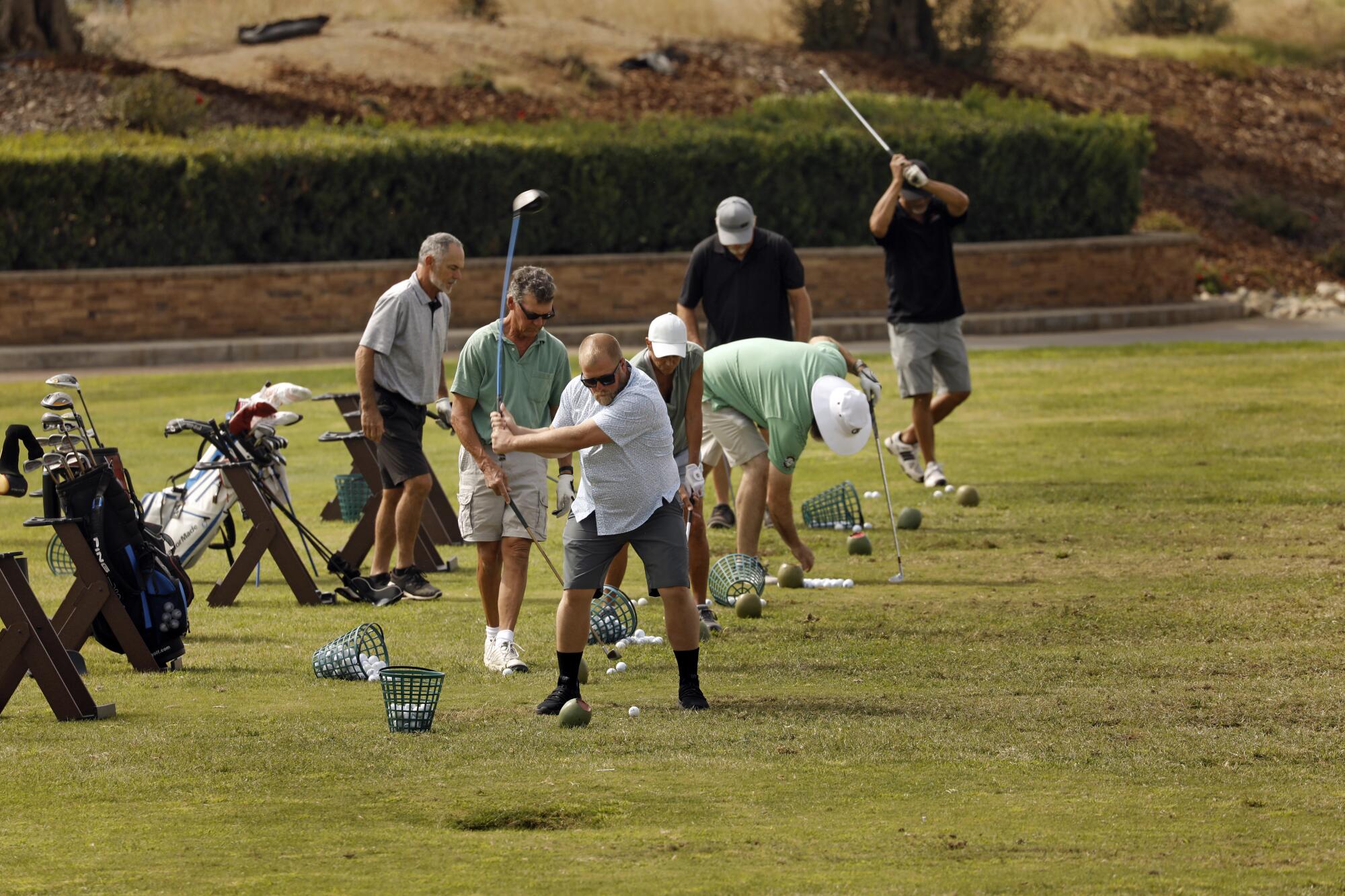
Potter charged that the fight over the historic massacre is really a ploy by the flourishing Paskenta to squelch the Redding Rancheria’s hopes for a shimmering destination casino “because of the mistaken belief that it ... will cut into the profits of their gaming facilities.”
Paskenta’s Alejandre, a designer who once ran a clothing company, denied that is the case.
Native activists fought for years to build support for taking down dams on the Klamath River in Northern California. Now, they hope removing the dams will help save their salmon.
While representatives for the Paskenta and Northern Wintu tribes bashed the casino proposal at the August hearing, representatives of at least eight other California tribes argued in support of the Redding Rancheria. One said the Redding group had proved itself a good steward of cultural resources.
Another speaker at the hearing was Miranda Edwards, the 28-year-old daughter of the rancheria CEO. The Stanford-educated Edwards and her mother spoke about the importance of moving the tribal group forward for the “Seventh Generation,” future descendants whose livelihoods must be planned for today.
“We work hard every day to provide for this rural community and make it the best that we can for everyone that lives there,” Miranda Edwards told legislators. “It’s disheartening to hear from those that choose not to see that. But it will not stop our work.”
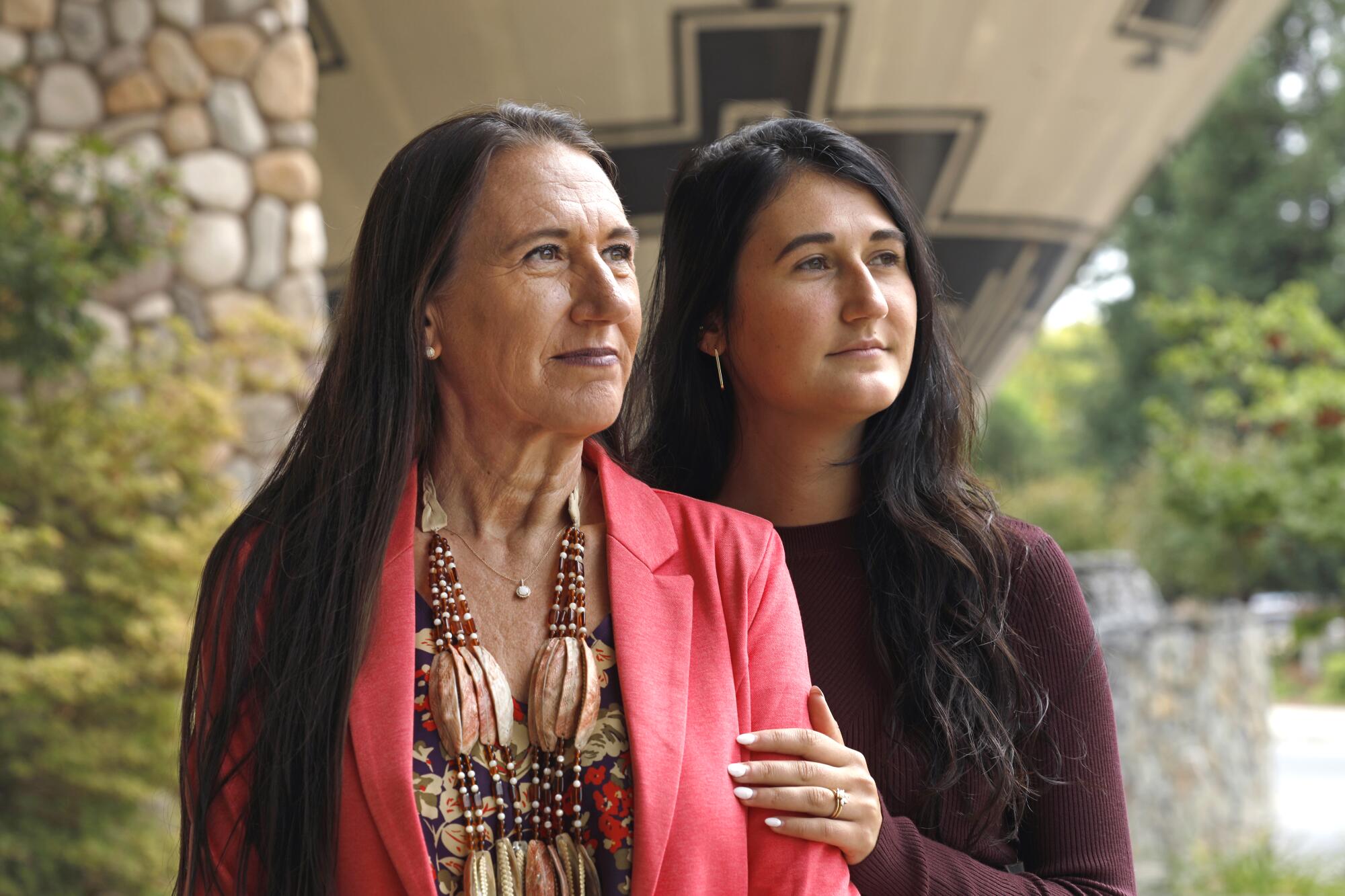
Potter, the rancheria’s chairman, had a sardonic take on the dispute.
“We always talk about crabs in a pot,” Potter said. “We are like all these crabs, stuck in a pot. When one tries to get out of the pot, all the others reach up and pull him back in.”
Will arguments about the Sacramento River massacre sway the final outcome of the Redding Rancheria’s casino quest? A BIA spokesman said only that “these issues are under review.” Nearly two centuries after representatives of the U.S. military decimated a civilization here, the federal government still retains ultimate authority over the fate of Native people.
- Share via
Watch L.A. Times Today at 7 p.m. on Spectrum News 1 on Channel 1 or live stream on the Spectrum News App. Palos Verdes Peninsula and Orange County viewers can watch on Cox Systems on channel 99.
More to Read
Sign up for Essential California
The most important California stories and recommendations in your inbox every morning.
You may occasionally receive promotional content from the Los Angeles Times.



